Rarely in my life have I been so taken with a country's magnificence, not only in terms of culture, but also in terms of statues, temples, and, of course, the pyramids. Egypt is a massive and diverse country. In February 2023, my partner's family and I were fortunate enough to visit this particular place. We took a flight from Brussels to Madrid, and his family arrived the next day from Malaga. The journey from Madrid to Luxor was quite nice; there were no delays, and the five and a half hour flight from Madrid to Luxor turned out to be a peaceful time after the tension of the previous days. We were told that there were two airports from which to begin our journey: Luxor and Cairo. We decided to fly to Luxor, travel down the Nile, and then fly on to Cairo. Luxor was our first stop.
Luxor
Our adventure began in Luxor, city known as the world's greatest open-air museum. We started with the ancient temples and archaeological sites. We explored the Karnak Temple Complex, where we wandered among towering columns, obelisks, and sanctuaries adorned with hieroglyphics. The sheer scale of this ancient religious site, dedicated to the god Amun, offered a glimpse into the architectural marvels of the New Kingdom.
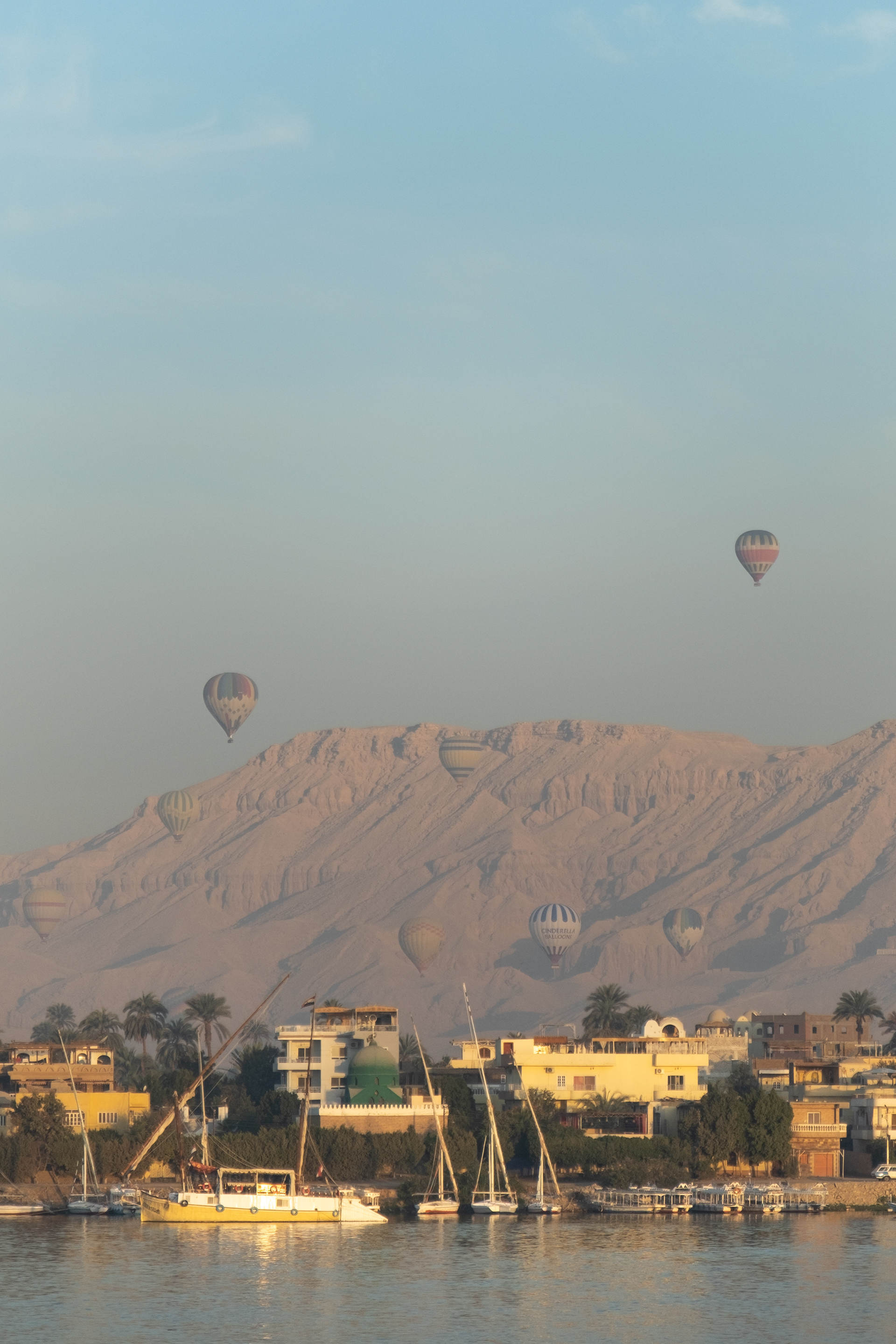
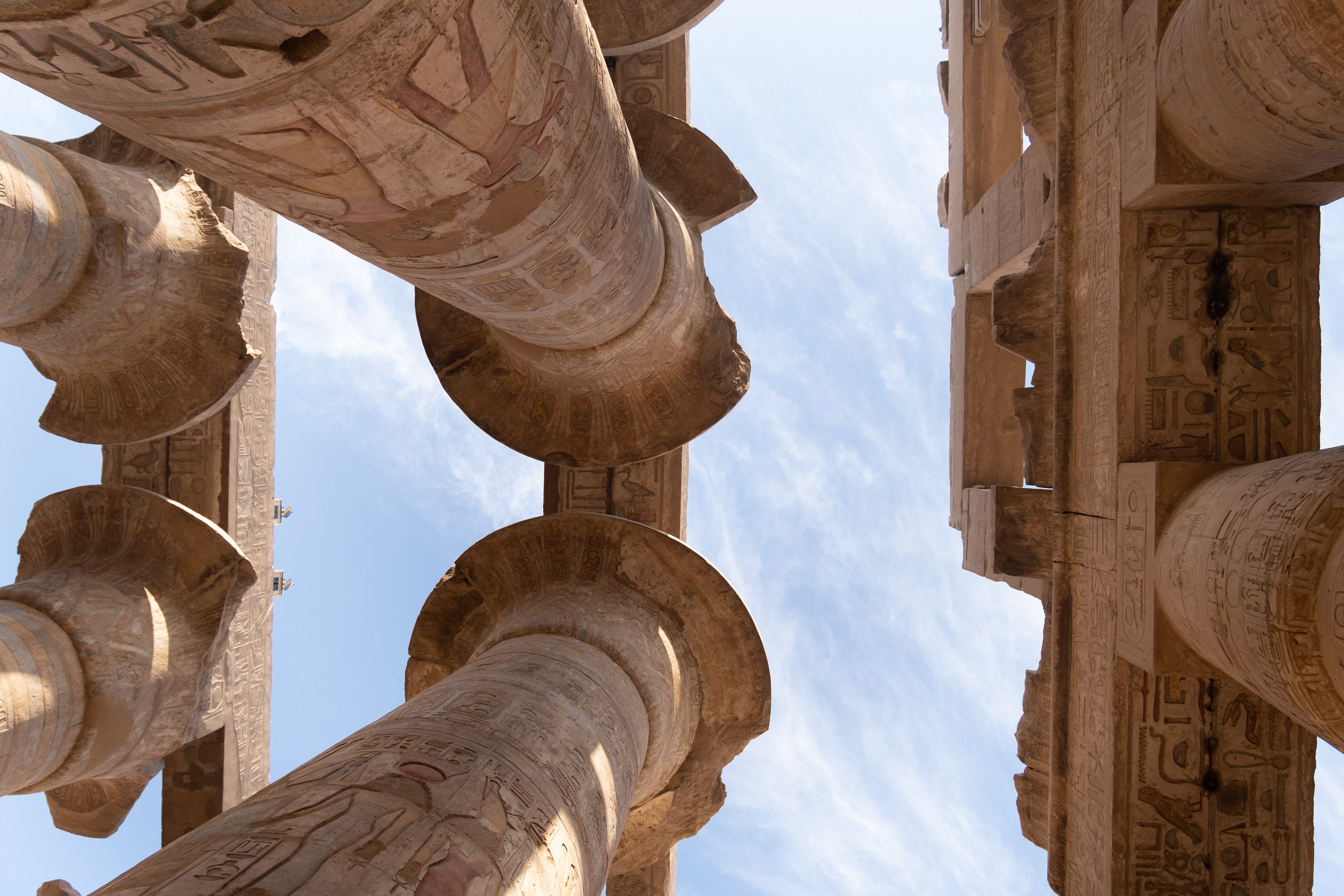


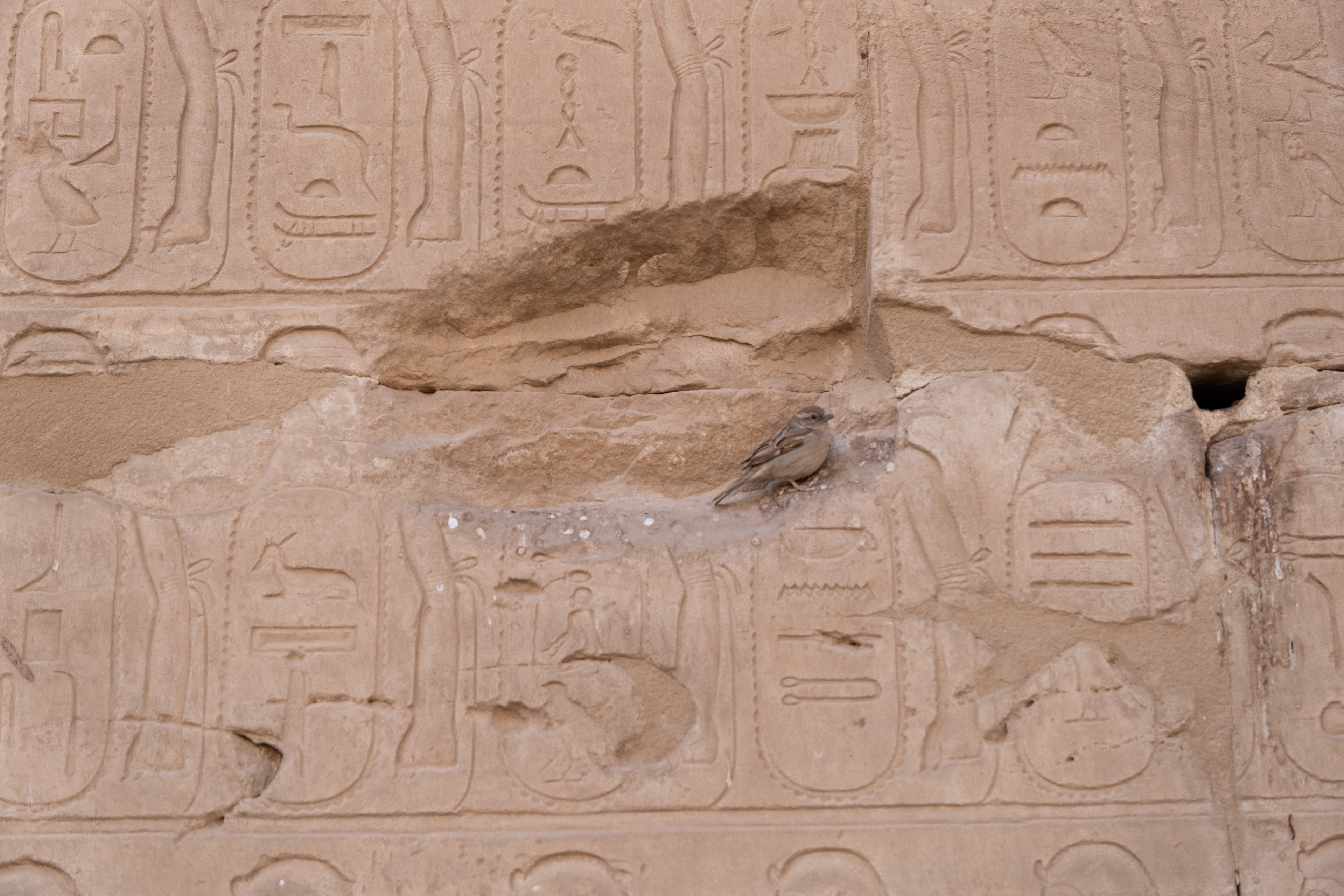
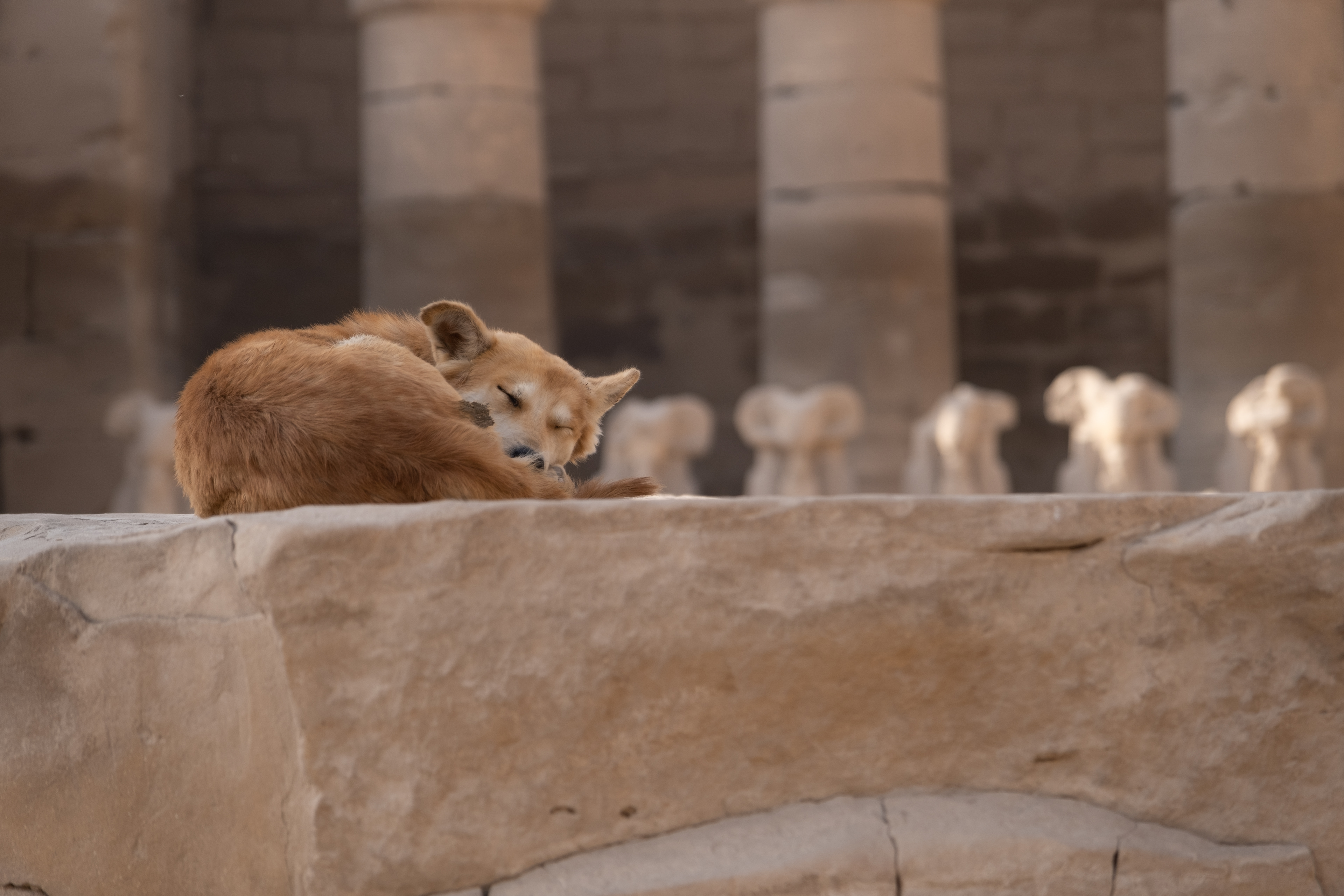
The Valley of the Kings
Afterwards, we visited the Valley of the Kings on the Nile's west bank, which is a maze of tombs beneath the desert sands. We saw the pharaohs' final resting places, including Tutankhamun's famous tomb. Each burial chamber represents a story about pharaonic afterlife beliefs, including scenery and rich decorations representing the deceased monarchs' divine journeys.
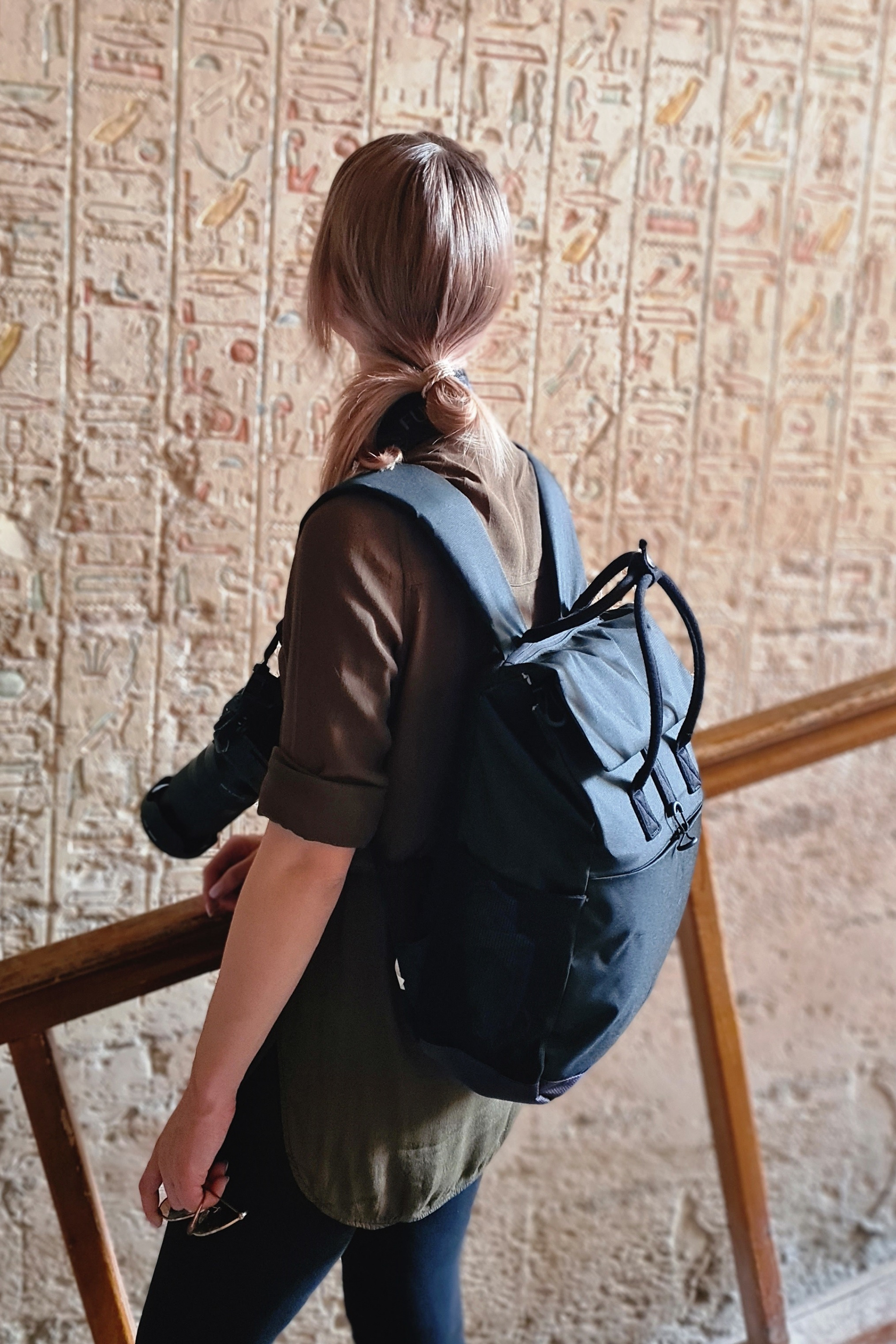
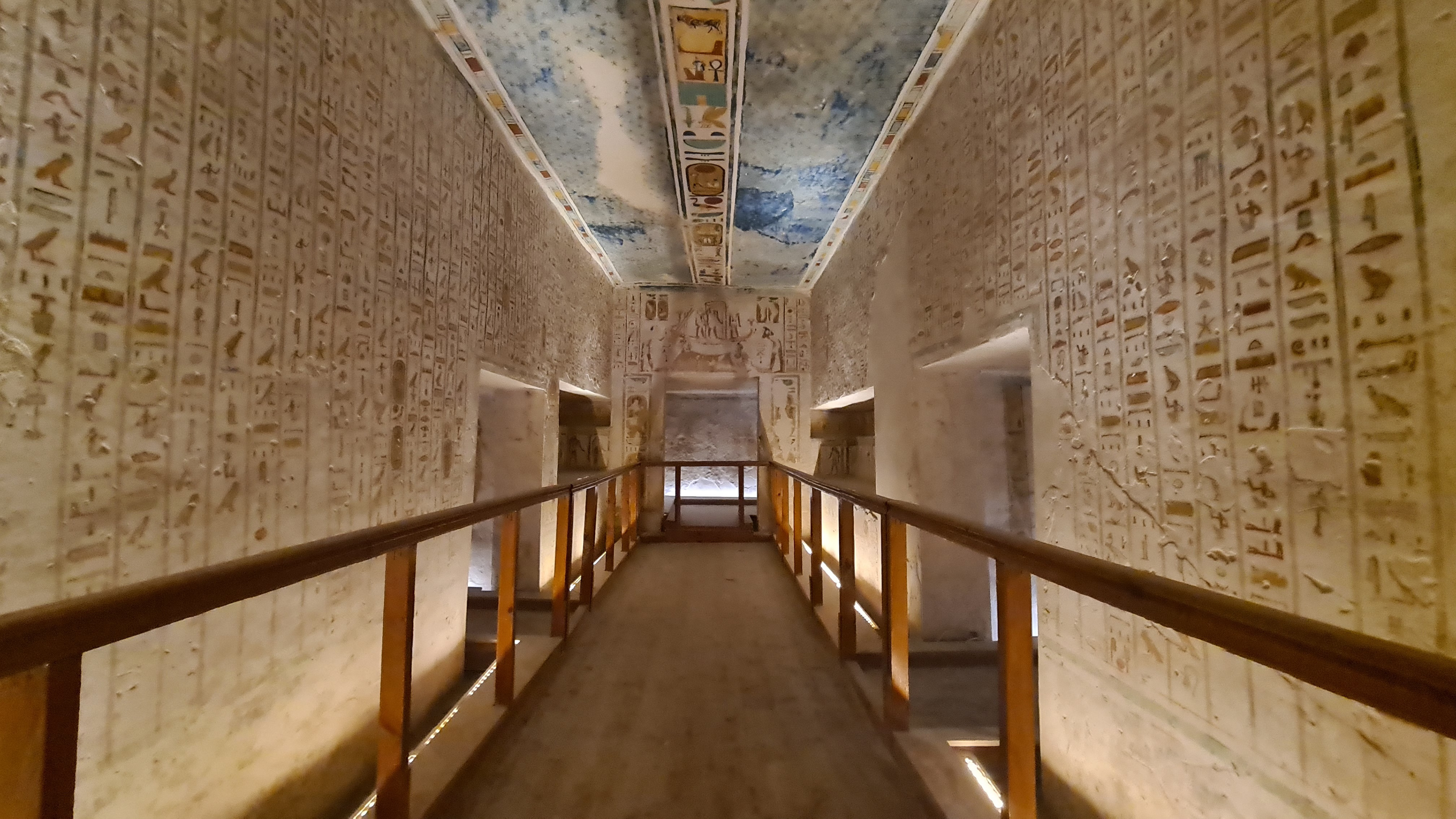
The Temple of Hatshepsut
The Temple of Hatshepsut, which rises from the cliffs of Deir el-Bahari, commemorates Queen Hatshepsut's reign. Its architecture complements the surrounding scenery, encouraging visitors to focus on the legacy of one of ancient Egypt's most important female leaders.


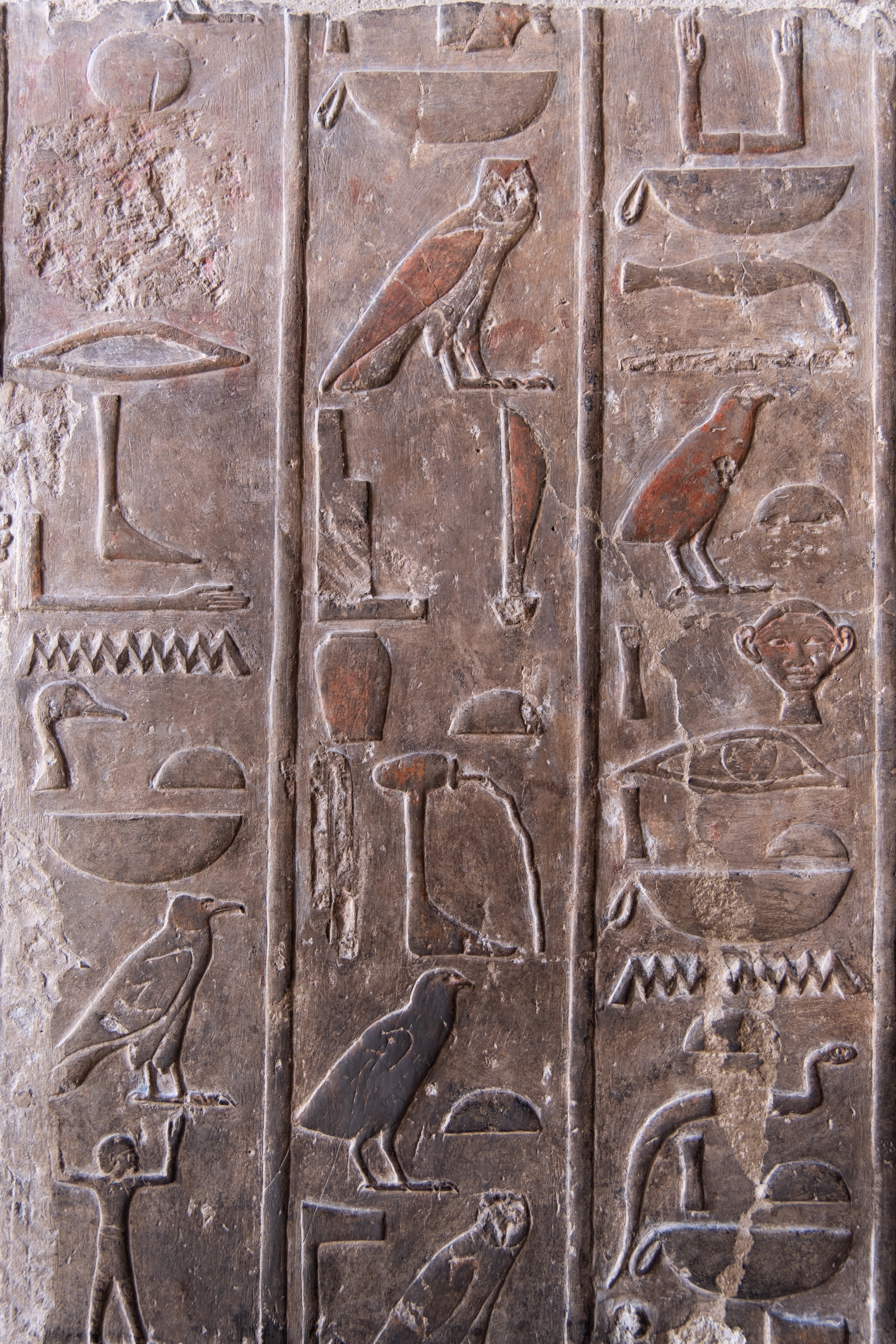
The Kom Ombo Temple
Visiting the Kom Ombo Temple shortly after sunset was a memorable experience for all of us. This temple, located on the Nile's banks in Aswan, represents both Sobek, the crocodile god, and Horus, the falcon-headed God. As evening fell, the temple's antique sculptures and hieroglyphs took on a mystical light, which was artificially illuminated in an extremely effective way. Kom Ombo was a religious and medicinal centre, with a sacred spring and mummified crocodiles. The temple also had its own contribution system in which donations were made to fund the temple's activities and maintenance.
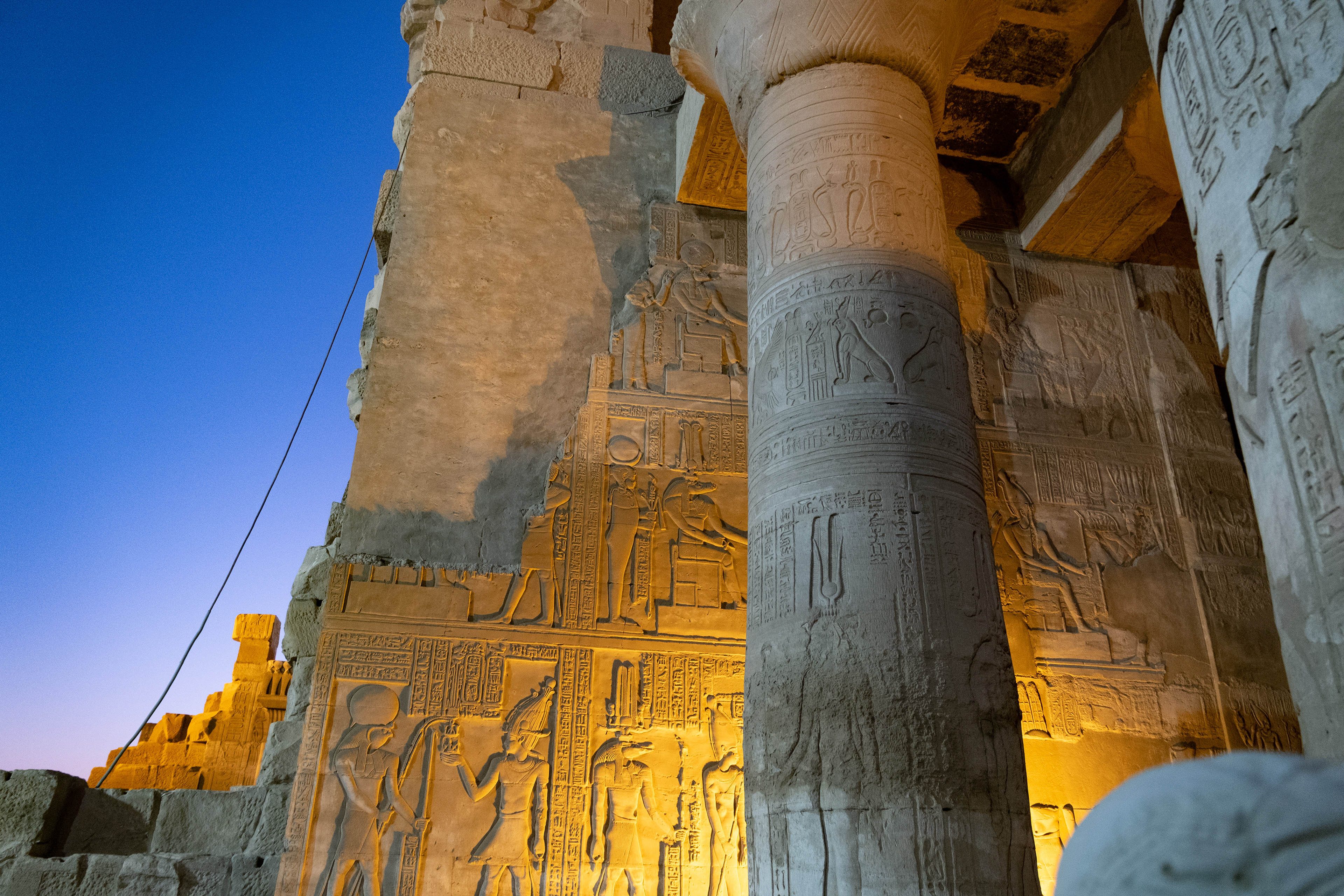

The Temple of Edfu
Another remarkable destination is the Temple of Edfu, which is devoted to the falcon god Horus. This extremely well-preserved temple is famous for its rising pylons, elaborate reliefs, and a gigantic statue of Horus as a falcon at the entrance. It offers a look of ancient Egyptian religious life and architectural achievement. Fortunately, we had Mido, our tour guide, who understood everything about the temple and could explain it better than anyone else.
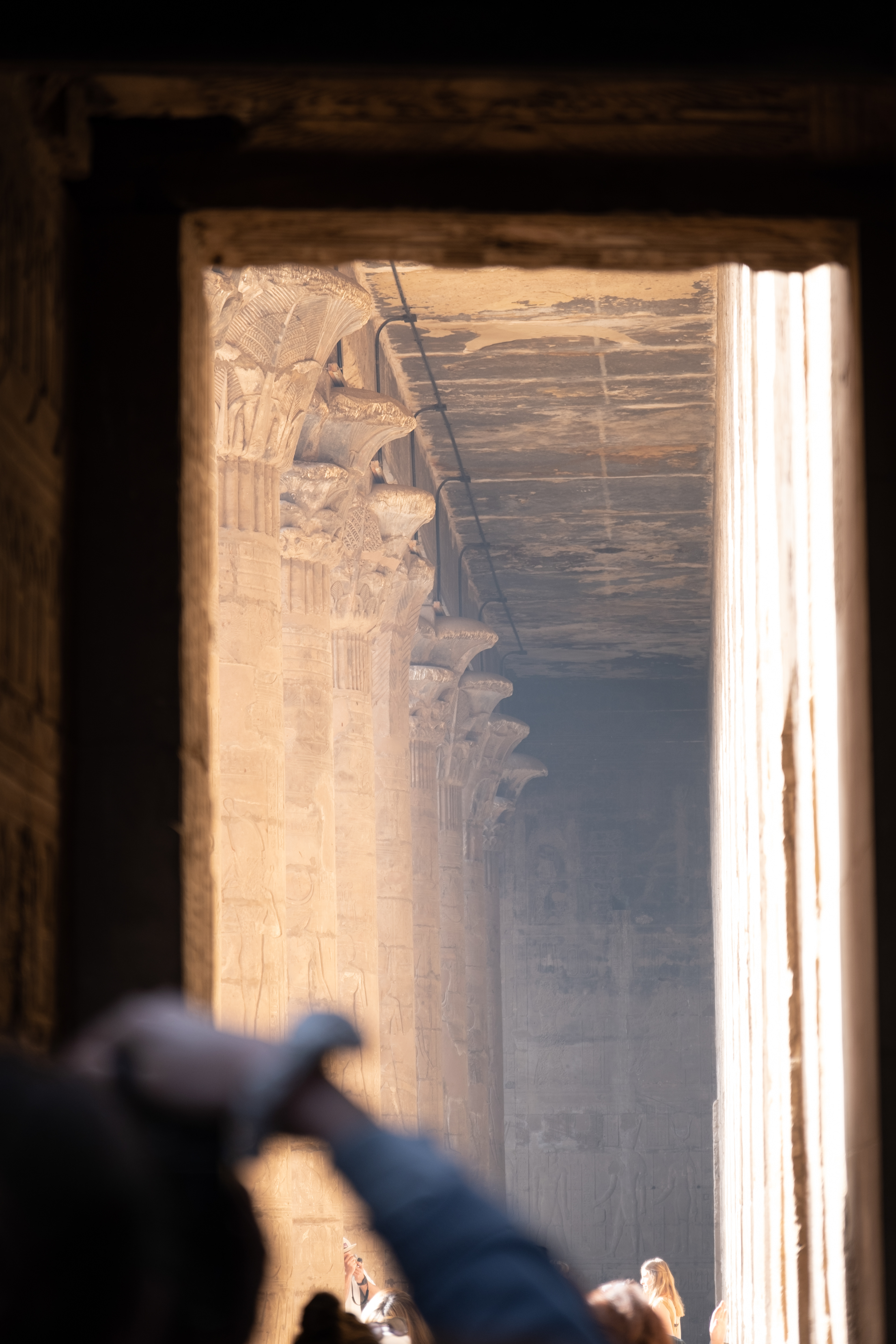
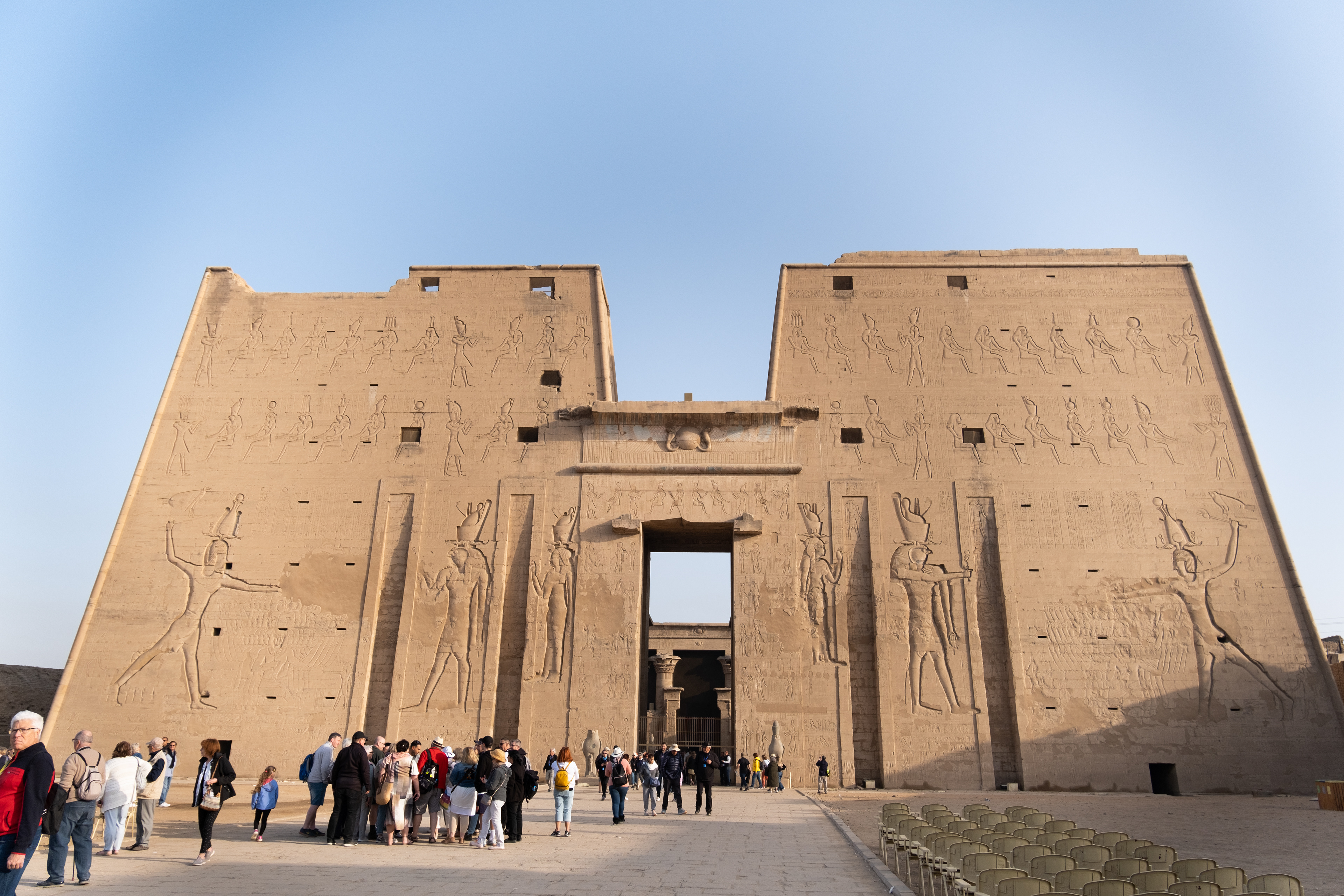
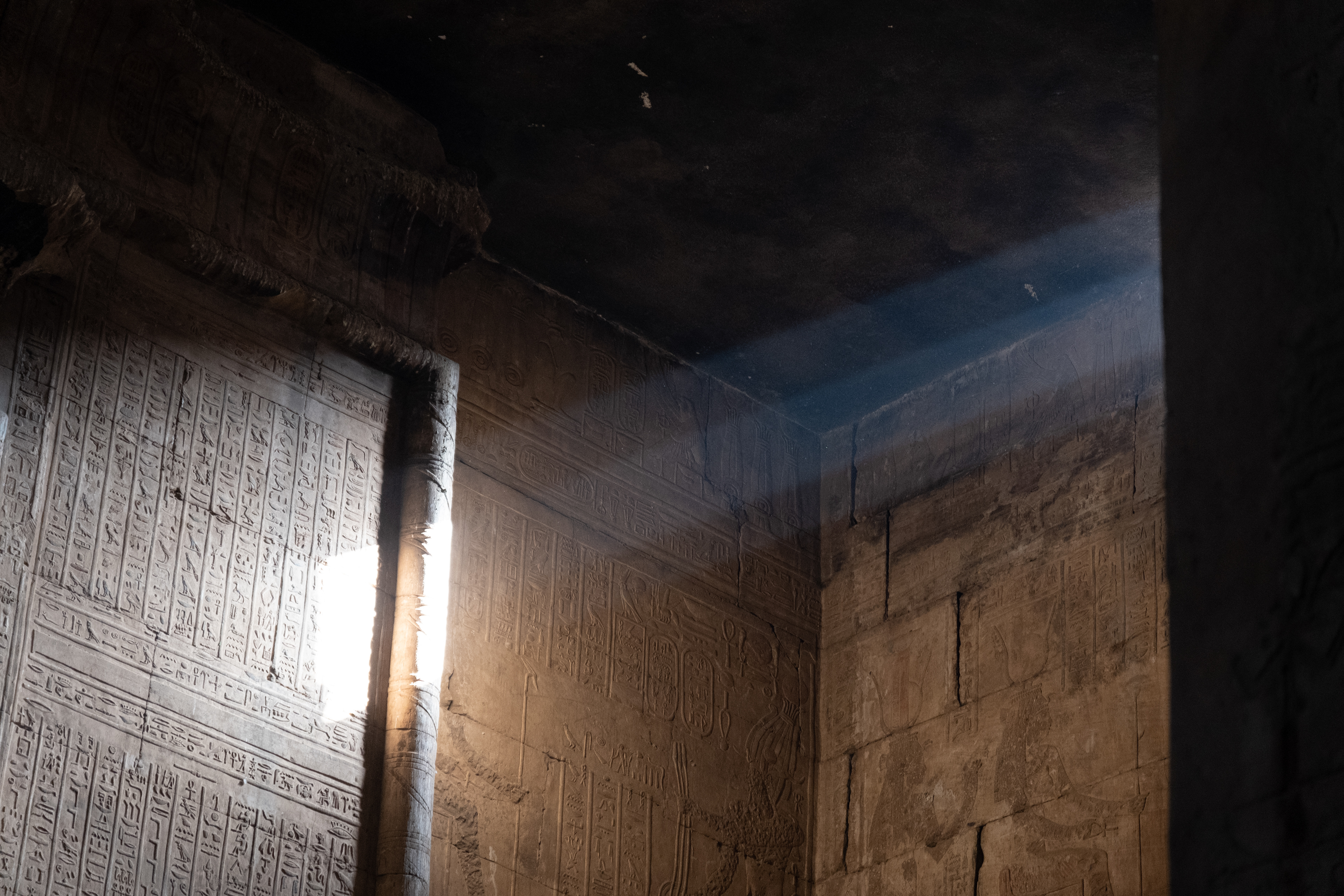
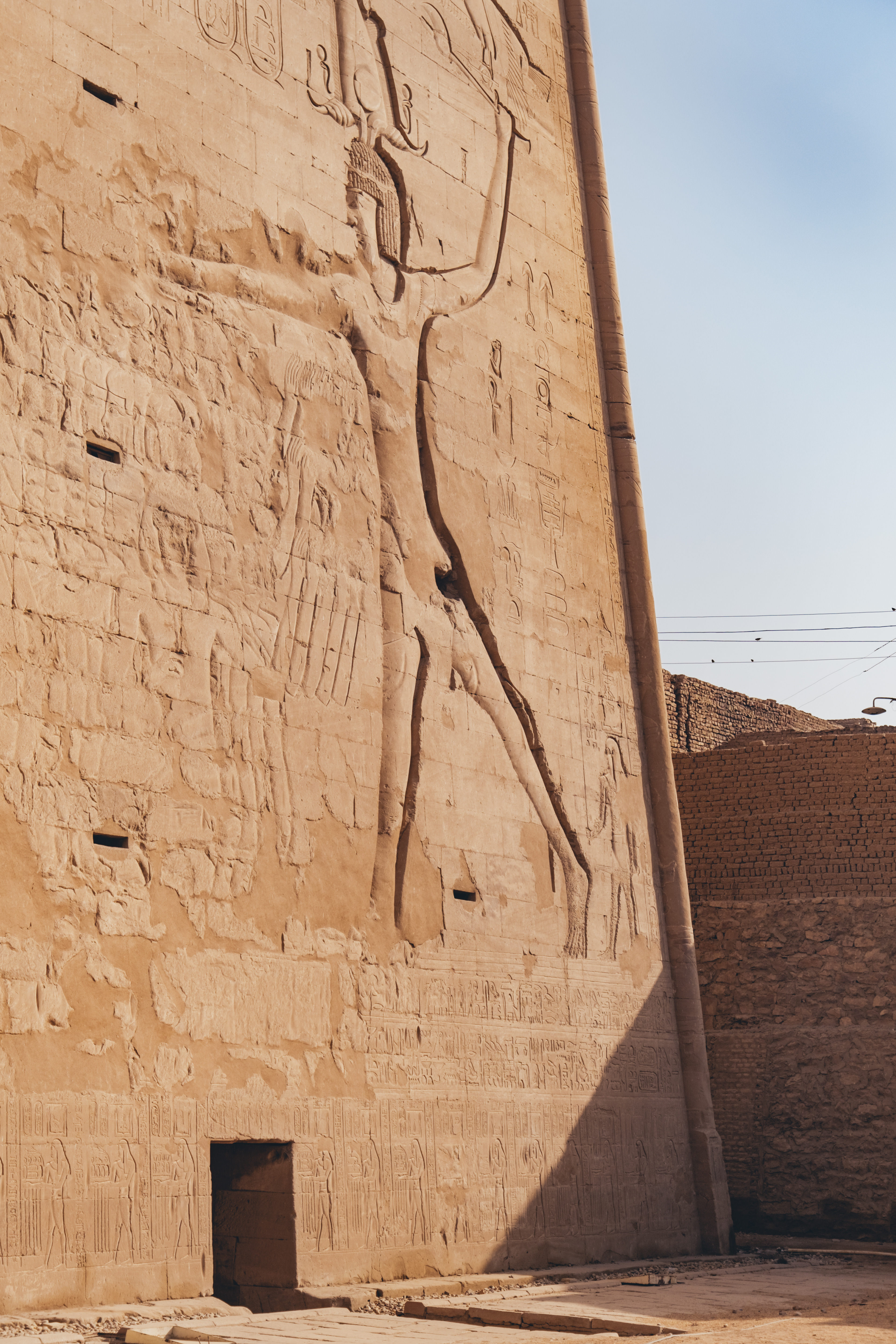
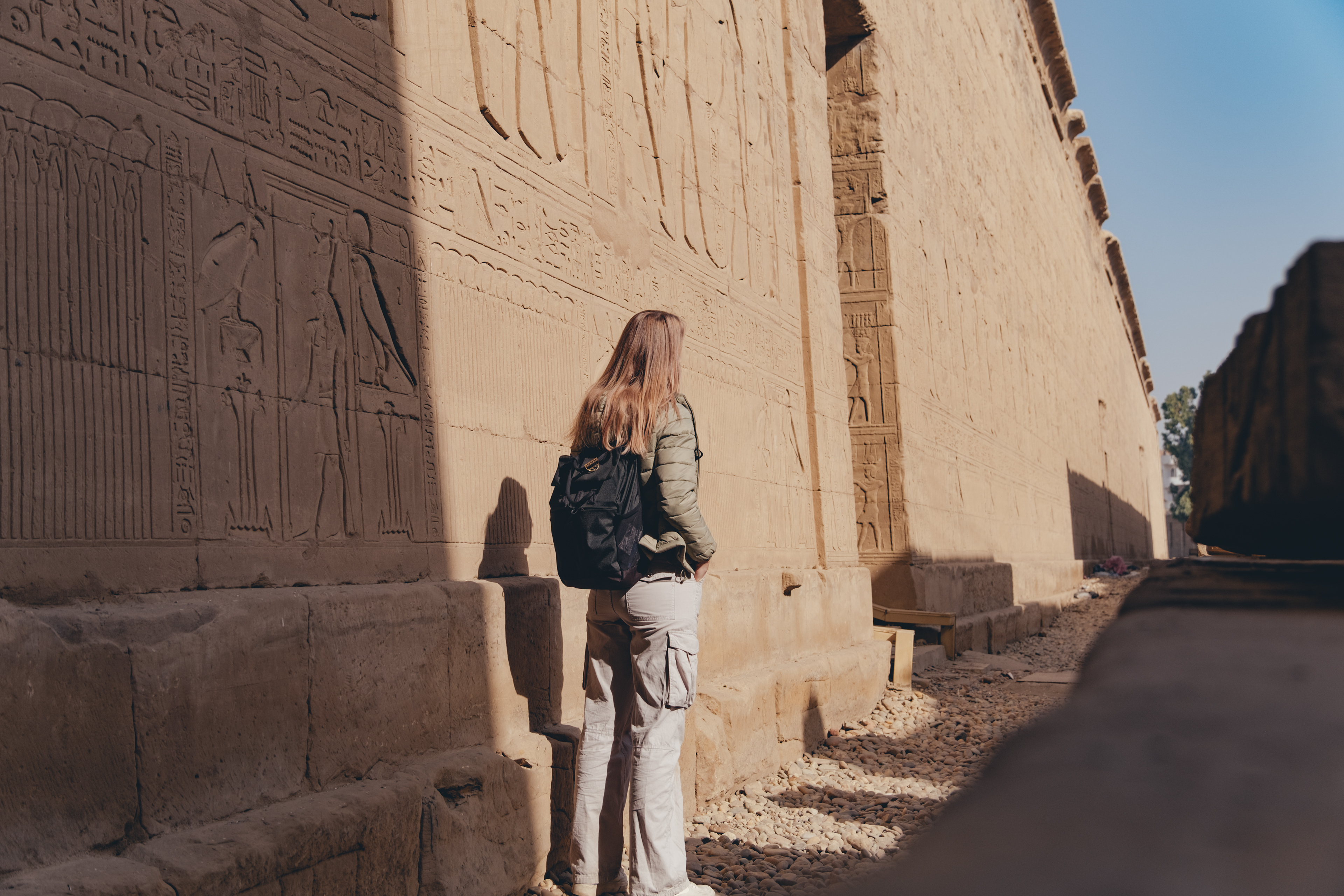

Abu Simbel
After exploring the wonders along the Nile, we took a bus ride through the desert to Abu Simbel. This UNESCO World Heritage Site boasts the iconic twin temples built by Pharaoh Ramesses II. The grandeur of Abu Simbel hit us immediately upon arrival, with the four towering statues of Ramesses II majestically seated at the entrance, each standing over 20 meters tall. Inside, the temples are just as impressive, adorned with elaborate carvings and hieroglyphics detailing the pharaoh's divine status and military victories.
What many don't know, is that the entire temple of Abu Simbel was relocated in the 1960s to prevent it from being submerged by the rising waters of the Aswan High Dam. This monumental task involved dismantling the temple into large blocks and reconstructing it on higher ground. Spain played a significant role.. As a token of appreciation for their assistance, Egypt gifted Spain the Temple of Debod, now a prominent landmark in Madrid.
One of the most important aspects of Abu Simbel is its precise alignment with the sun. On two specific days each year, sunlight illuminates the sanctuary's inner statues.
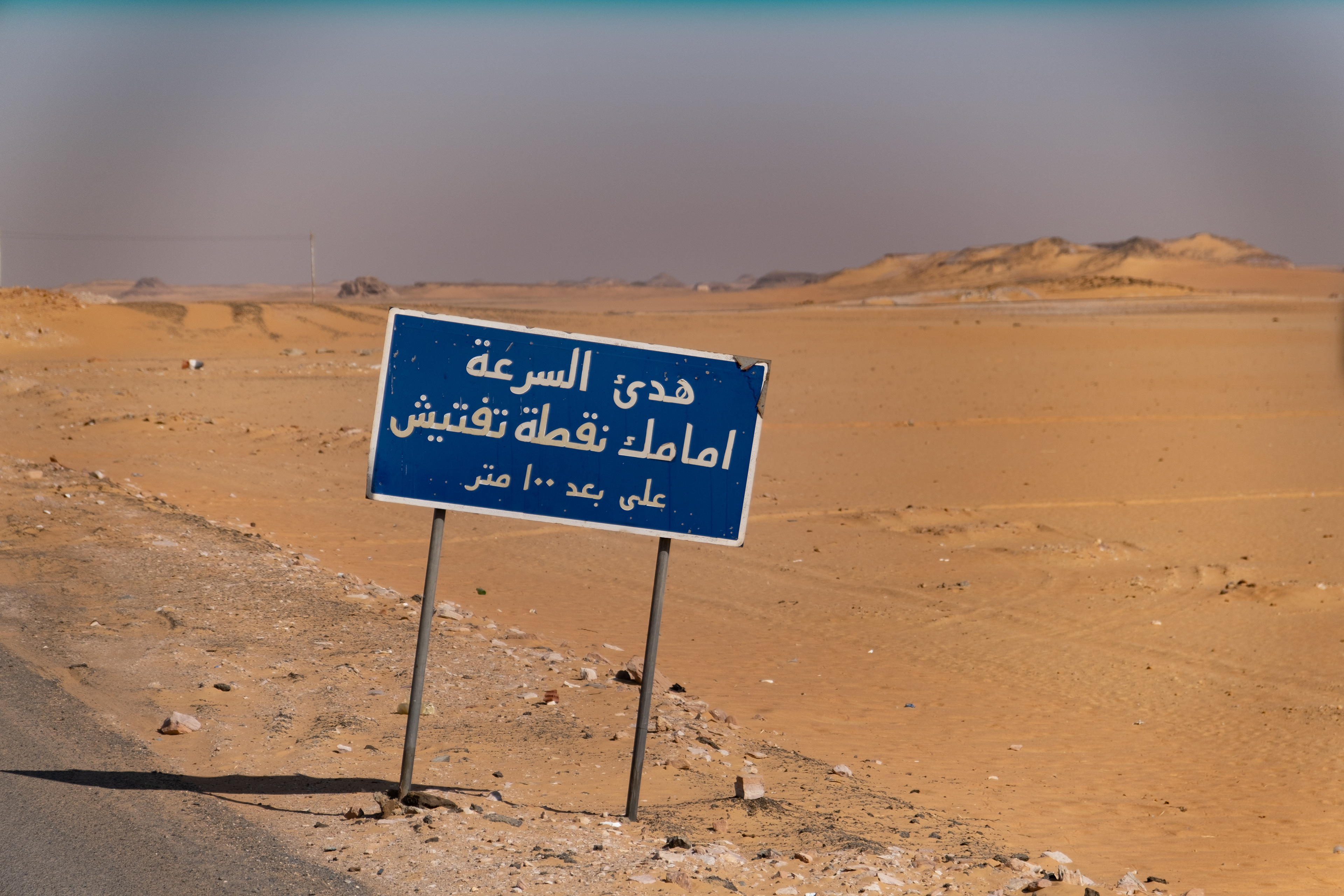
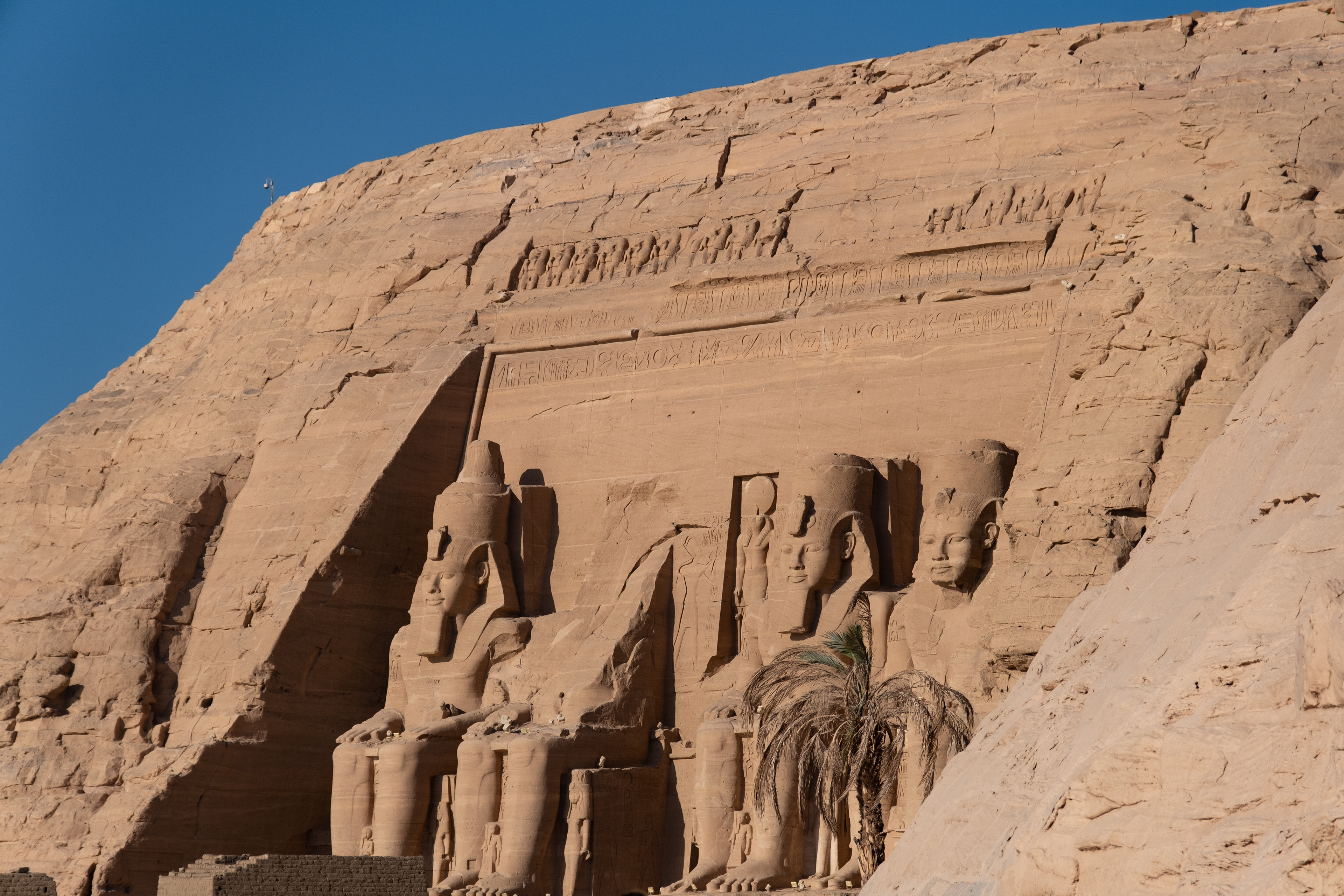
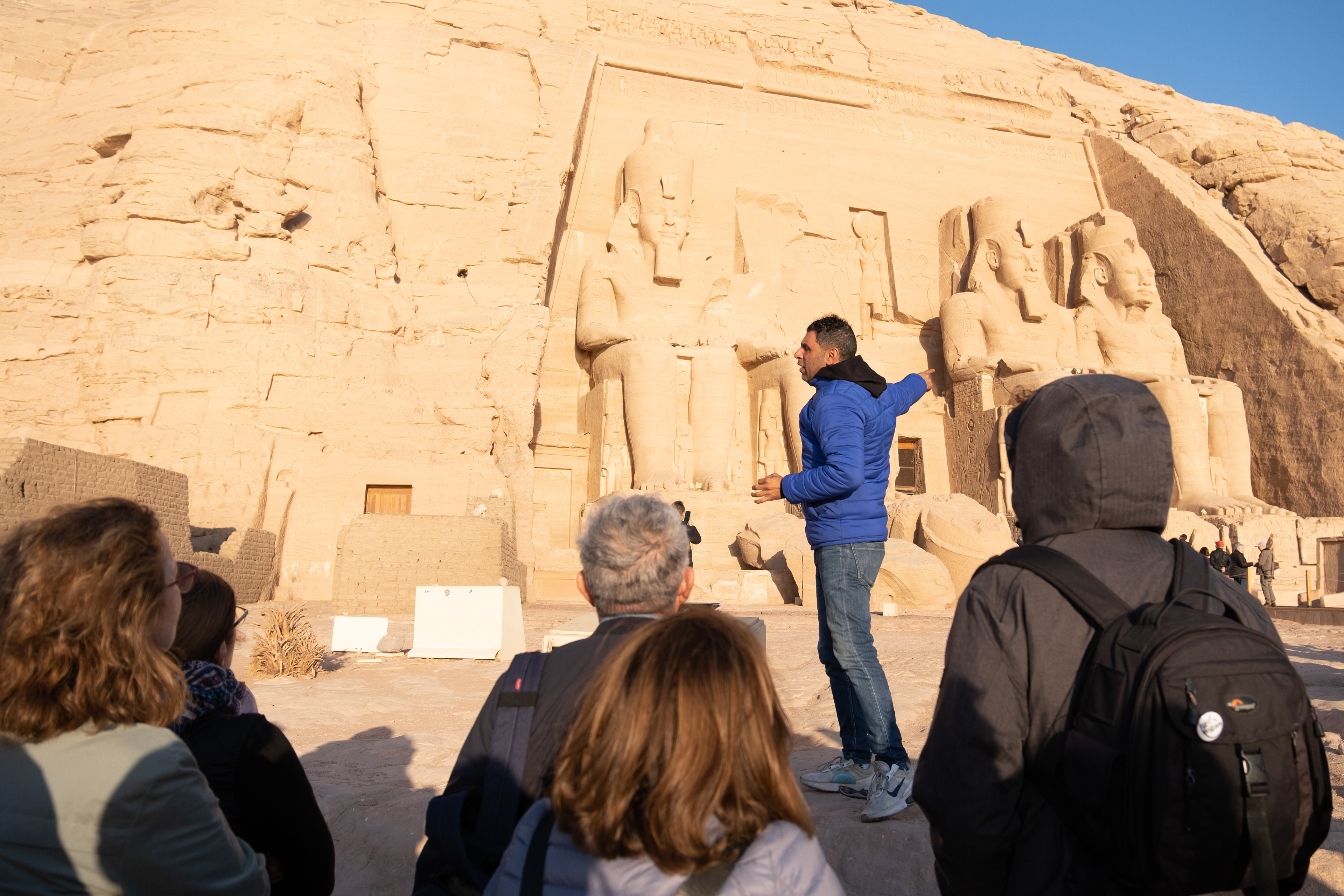
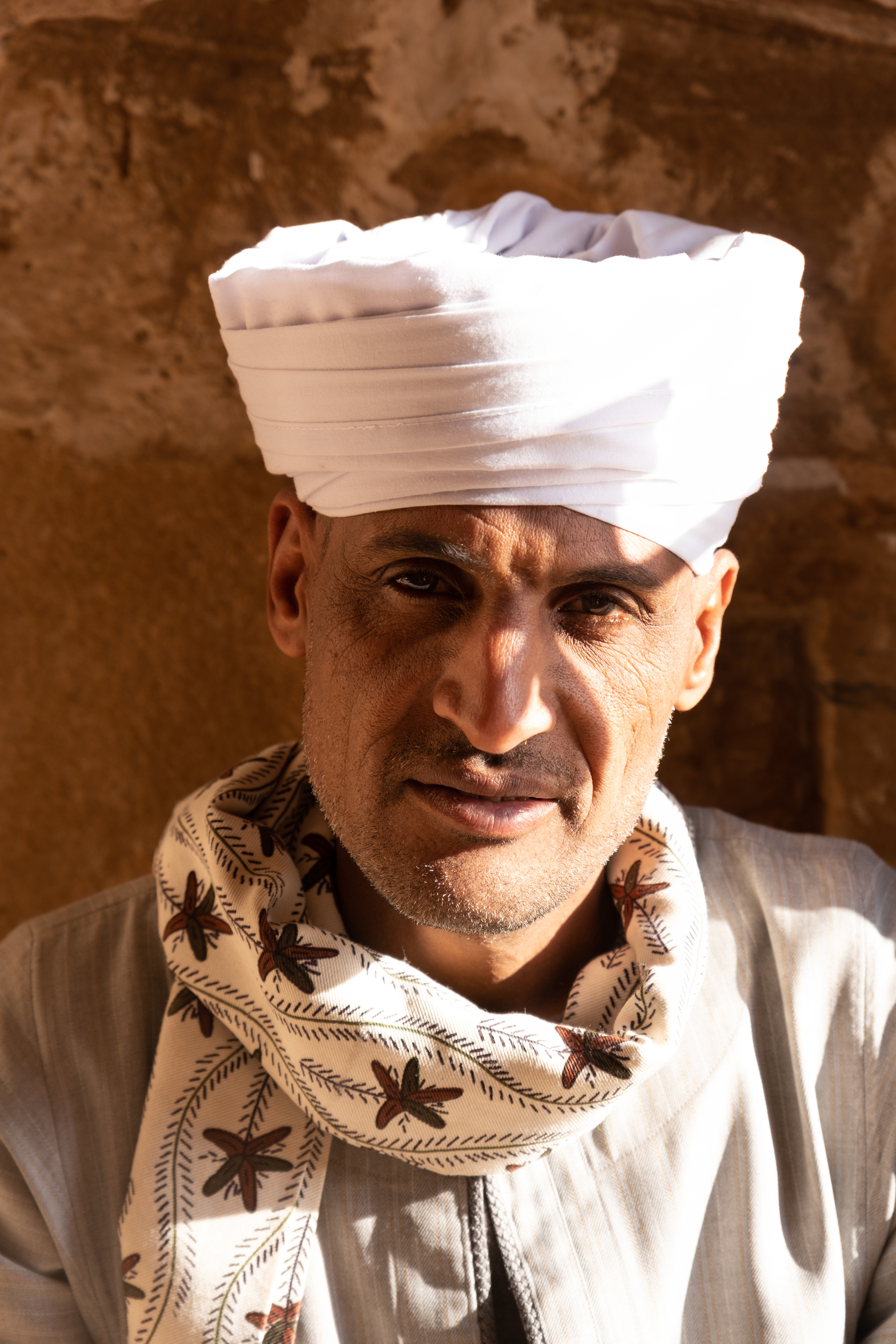
The Nubian village
During our journey, we lived on a boat and traveled along the Nile for three days, from Luxor to Aswan. One of the highlights of our trip was visiting a Nubian village near Aswan. Here, we were warmly welcomed and had tea with the locals. The vibrant culture and colorful houses of the village provided a unique glimpse into Nubian life. We also had the incredible experience of attending a Nubian language class, where a very funny teacher taught us the alphabet.




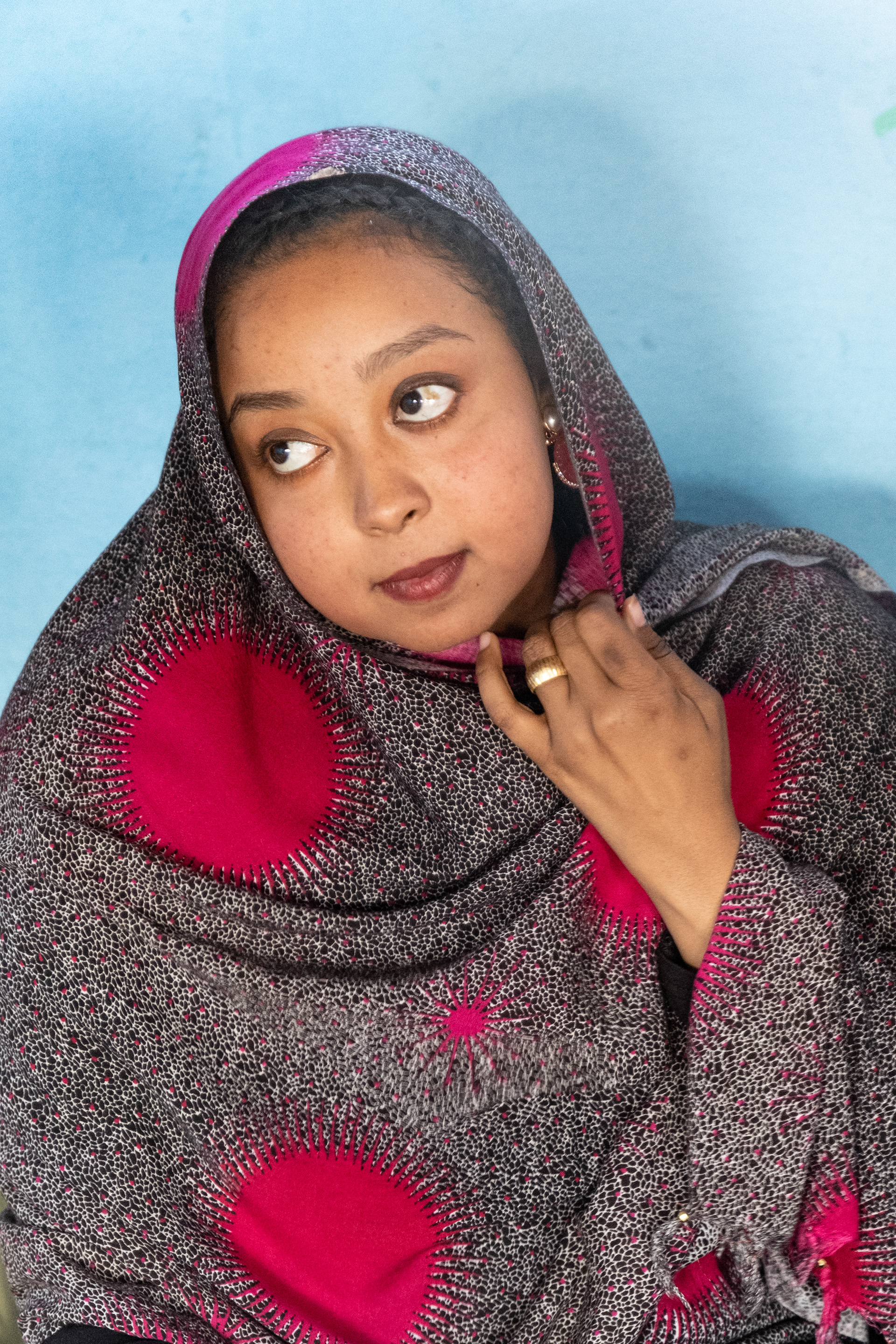

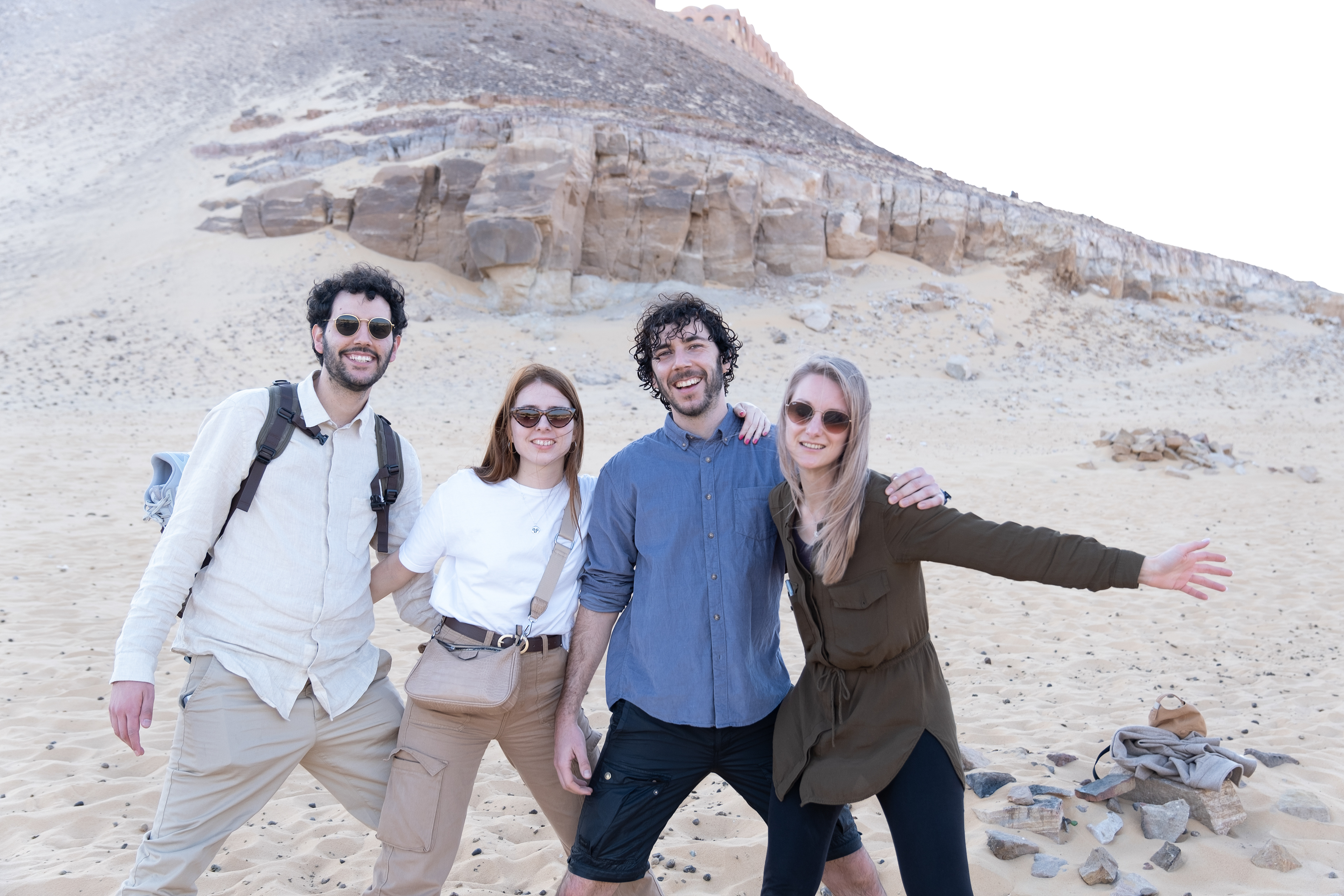

Temple of Isis
Our last stop in the south of Egypt before flying to Cairo was the enchanting Temple of Isis at Philae, also known as the Temple of Cats. Situated on Agilkia Island, this temple has a rich mythology. Dedicated to Isis, the goddess of magic and motherhood, the temple was a significant center of worship in ancient Egypt.
In Egyptian mythology, Isis was the wife of Osiris and the mother of Horus, revered as the ideal mother and wife. The temple complex includes beautiful colonnades, sanctuaries, and shrines, adorned with intricate carvings and hieroglyphs that depict the legends of Isis. The nickname "Temple of Cats" comes from the numerous feline statues and carvings found throughout the site, symbolizing the goddess's protective and nurturing nature.
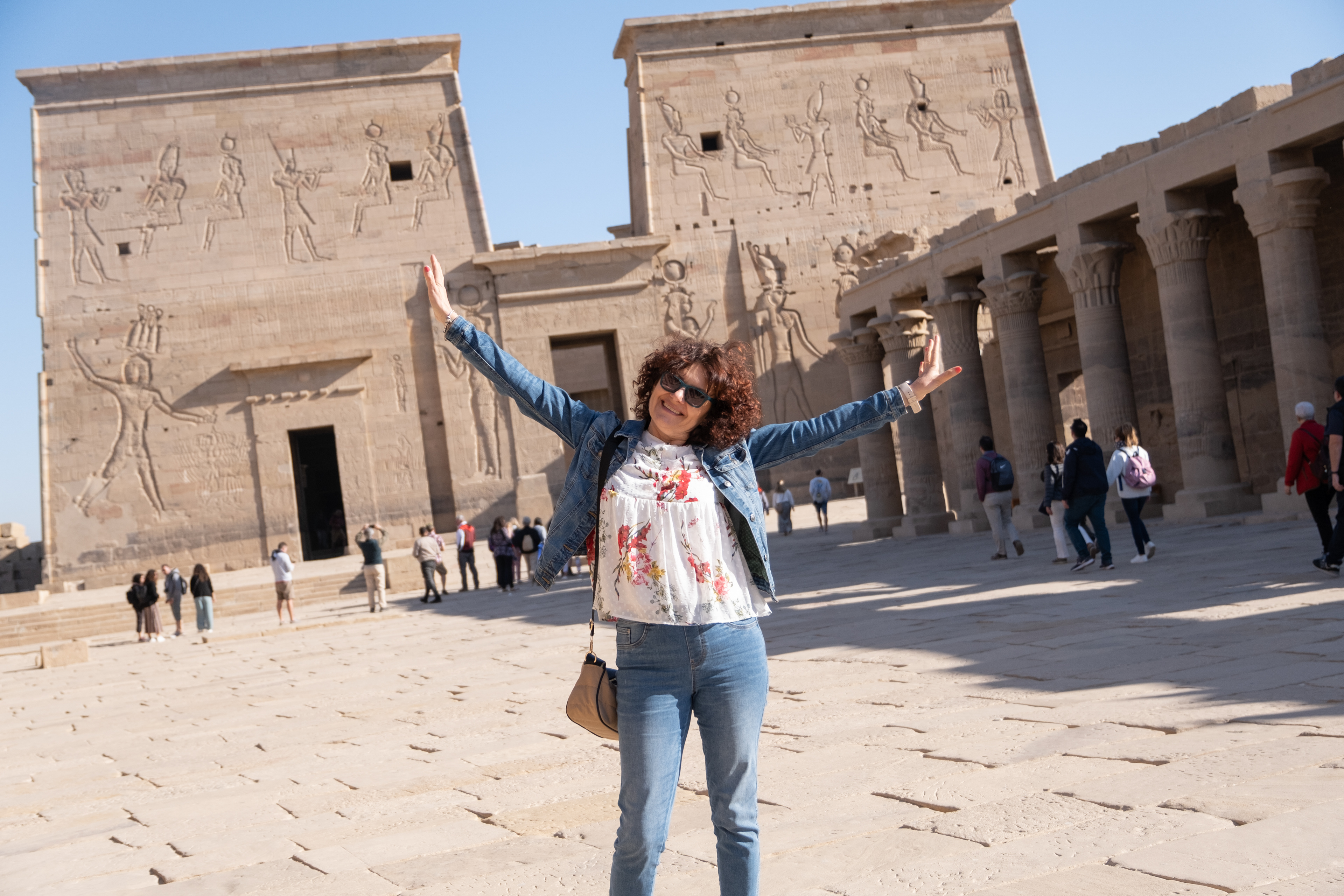
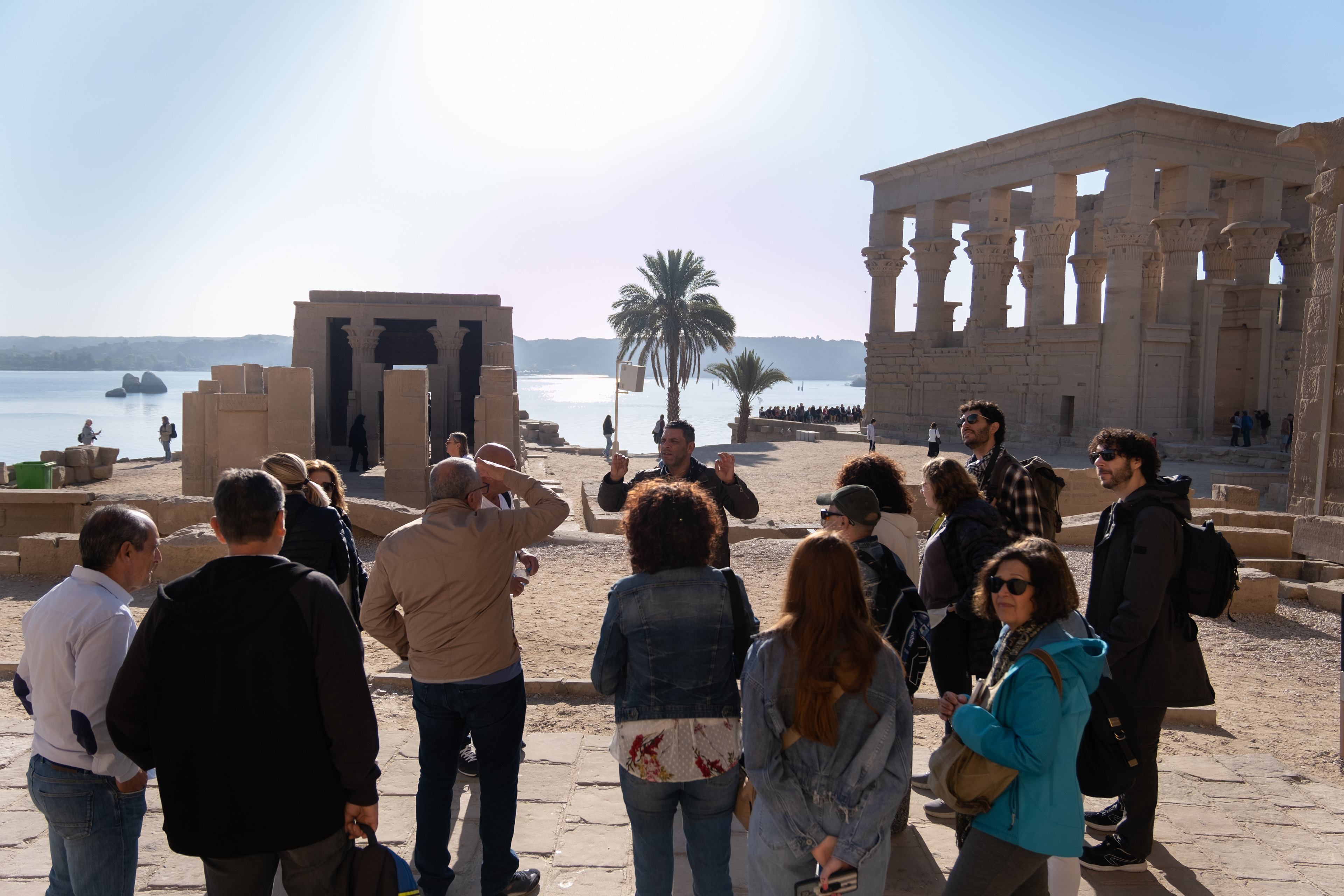
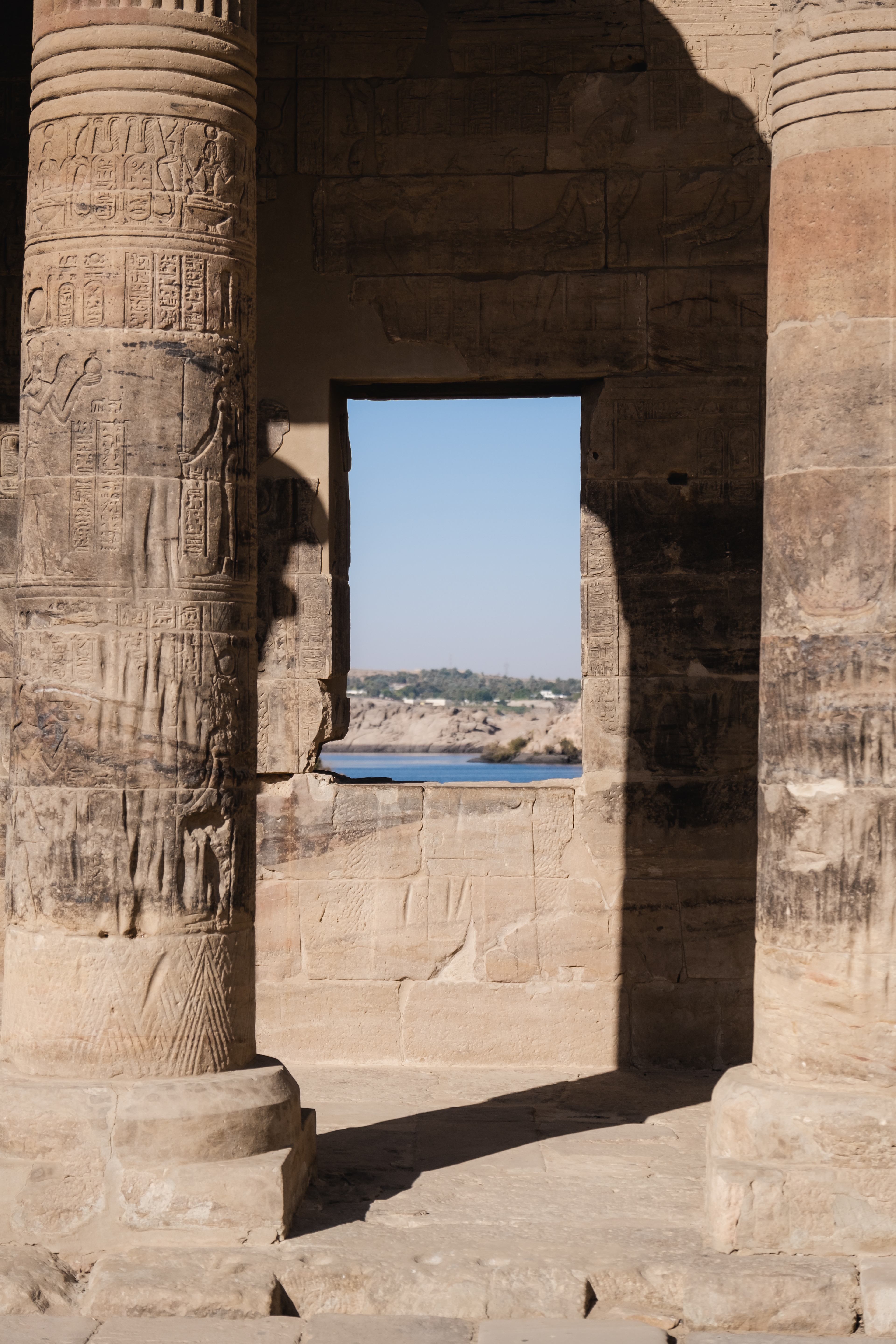
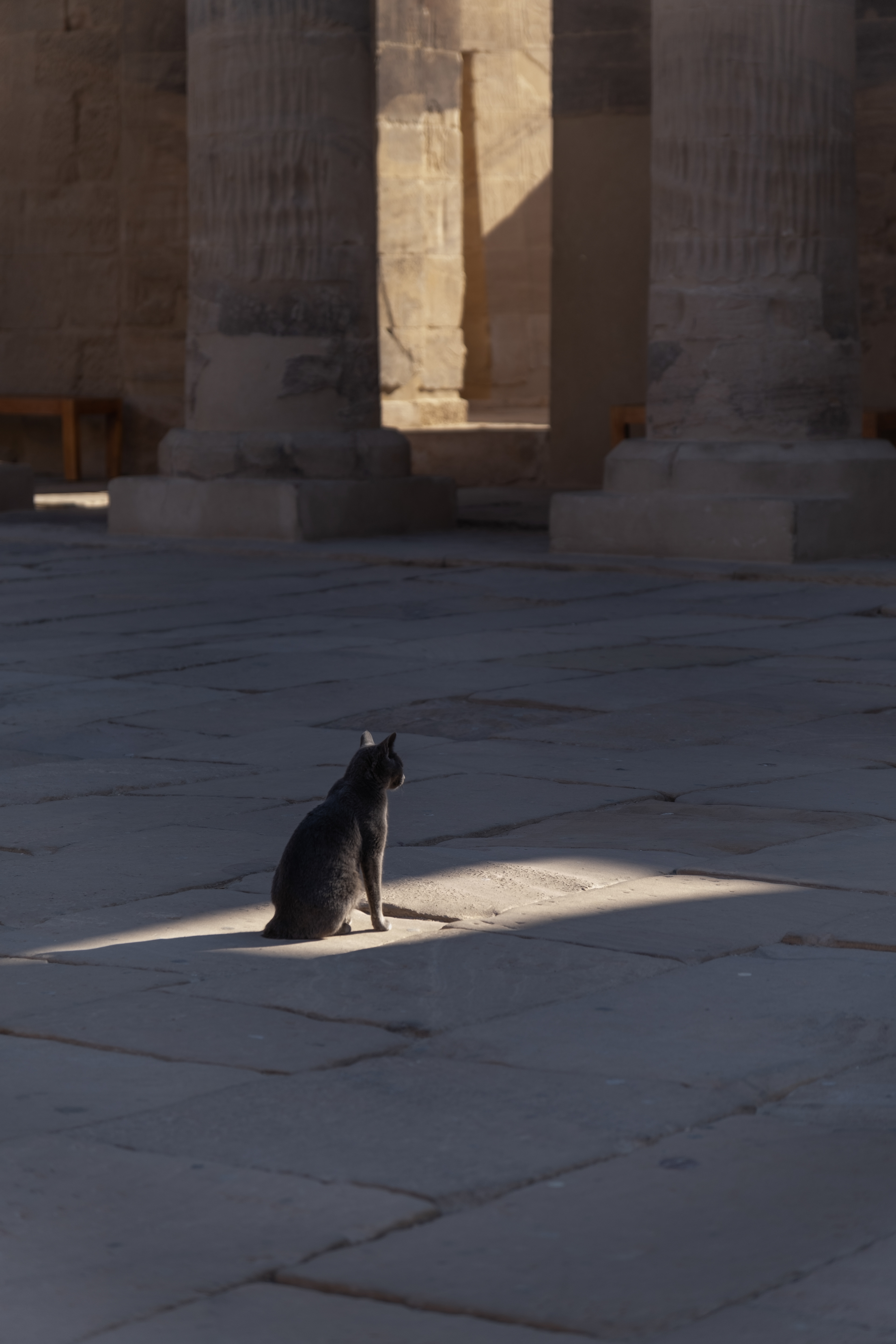

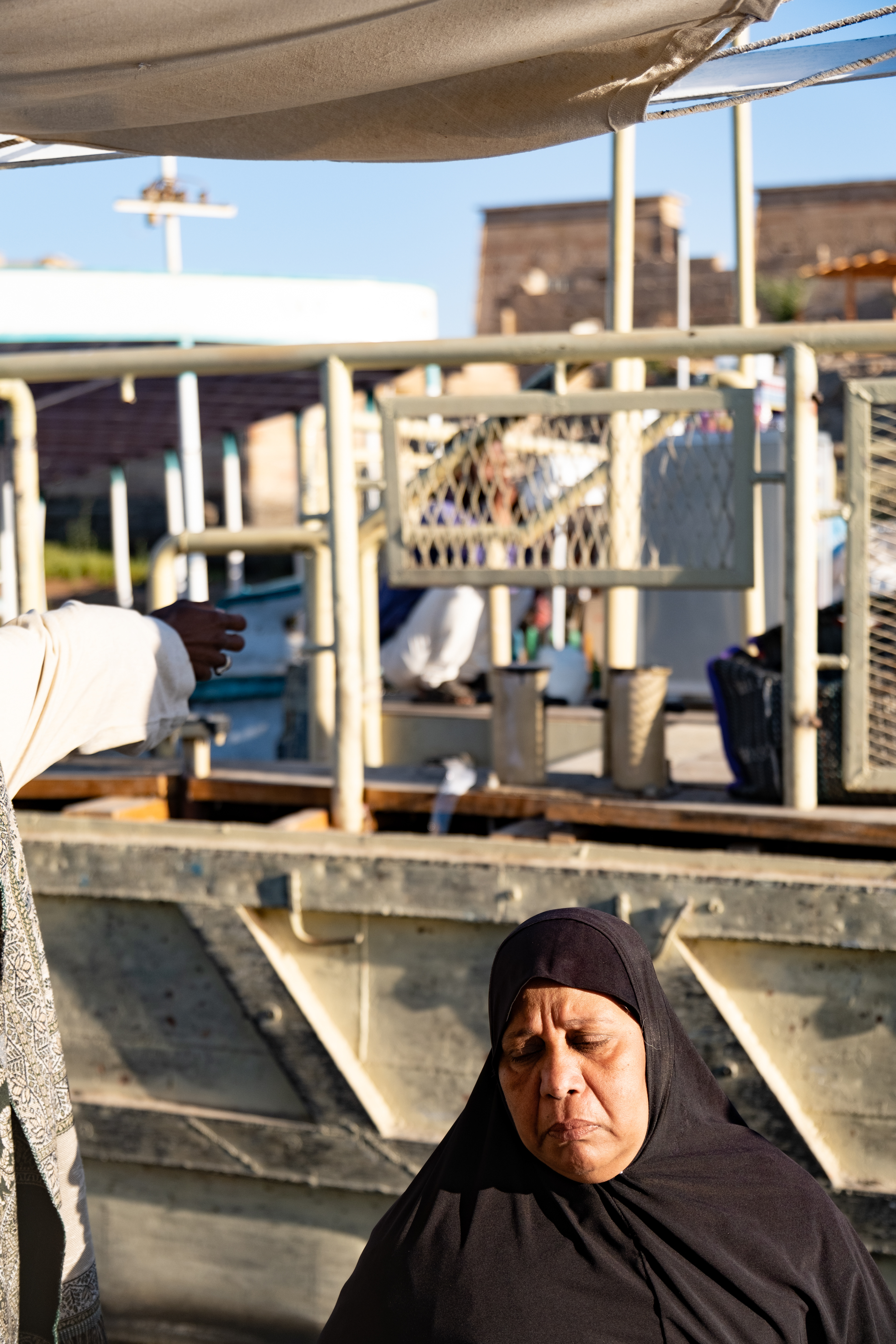

To complete our Egyptian journey, we took an internal flight to El Cairo. Our visit to the famous Pyramids of Giza was the most special moment of the trip. As we stood in awe before these ancient marvels, our tour guide shared personal anecdotes that enriched our experience. He told us that he grew up next to the pyramids and used to play around them as a child. What a privilege, a tourist would think, to have such a monumental playground. We only had a few hours to enjoy this magical place, but those moments were filled with amazement as we soaked in the grandeur of the Pyramids and the Sphinx.
One of the highlights of our visit to the Pyramids was exploring the Pyramid of Khafre (Kefren). This pyramid, the second tallest and second largest of the Giza pyramid complex, is distinguished by its still-intact limestone casing at the top. Entering the Pyramid of Khafre, we navigated through narrow passages that led us deep into the heart of this structure. Inside, we saw the burial chamber, which once held the sarcophagus of the pharaoh. Our guide explained the significance of the pyramid’s construction and the ingenuity of the builders.

In Cairo, apart from the Pyramids and Sphinx, we explored the Citadel of Saladin, a medieval Islamic fortification offering panoramic views of the city.
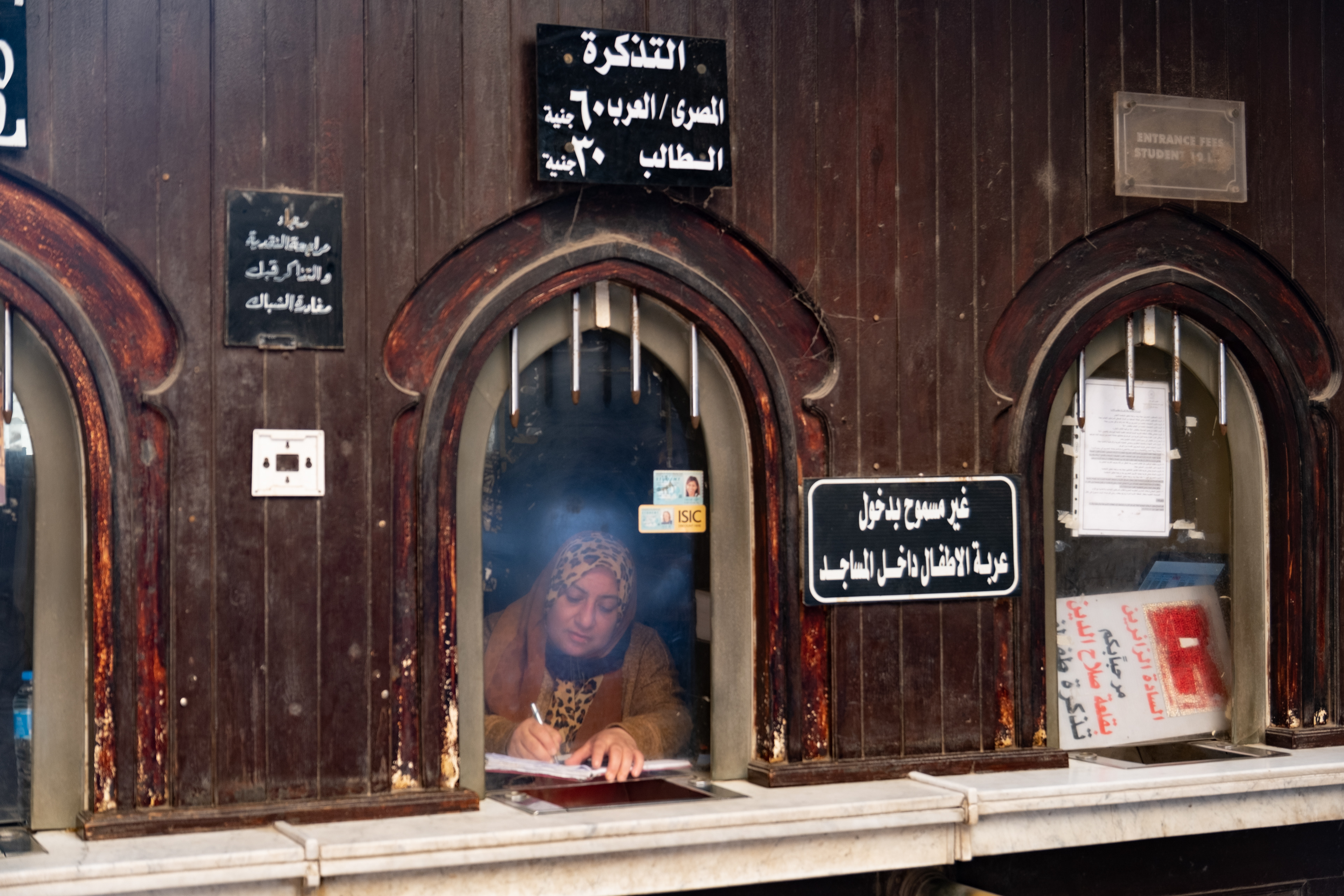





Our journey through Egypt was made all the more memorable by our tour guide, Mido, who stayed with us from the beginning until the end of the trip. Mido took care of everything, ensuring that our travels were smooth and enjoyable. His extensive knowledge of Egyptian history and culture added immense value to our experience. Mido’s passion for his country was evident in every story he told, every fact he shared, and every site he guided us through. We learned so much thanks to him, from the intricacies of ancient hieroglyphics to the legends of the pharaohs. Mido’s warmth, humor, and dedication turned our trip into an unforgettable adventure.
Embark on this unforgettable trip through Egypt, delving into the land of pharaohs, temples, and timeless wonders that will leave you with memories to last a lifetime. These stops along the Nile River offer a holistic view of Egypt's architectural marvels, artistic achievements, and spiritual traditions, enriching your journey through this timeless land of wonders and mysteries.
